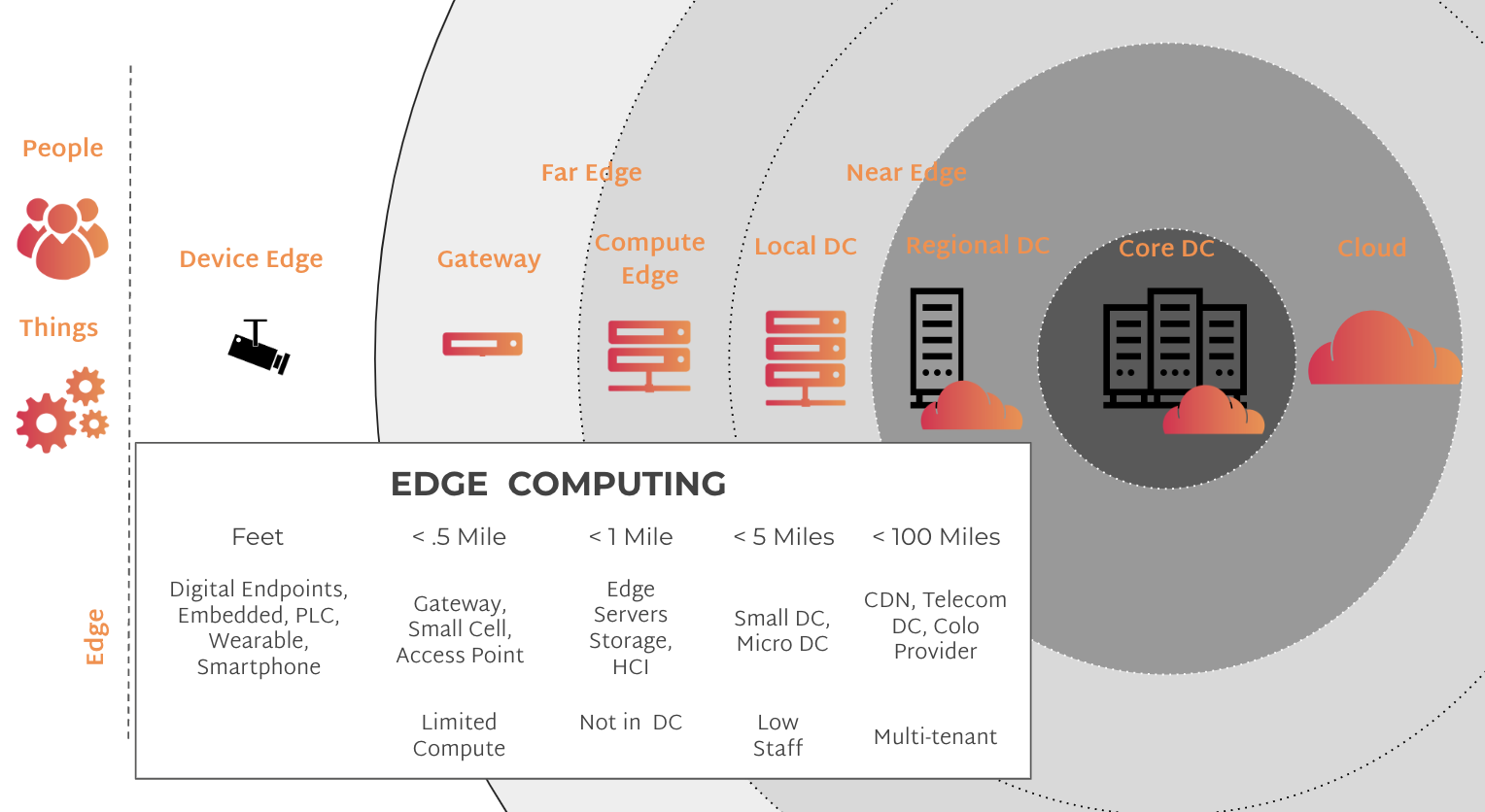In a previous SC//Insights post, we explored some of the key differences between edge computing and cloud computing and detailed why running applications in close proximity to where they are being used and generating data can accelerate decision-making and overall business performance.
In this post, we’ll take a closer look at edge computing and detail some of its advantages over cloud computing – especially for industries like retail, manufacturing, transportation, and healthcare, where network latency and data privacy are primary concerns.
What is Edge Computing?
Edge computing is a distributed computing model that positions processing and storage closer to where the action is – from endpoint devices and smartphones to sensors and the vast array of Internet of Things (IoT) devices that have become ubiquitous in the modern enterprise. According to Gartner, 75% of enterprise-generated data will be created and processed outside a traditional data center or cloud by 2025, up from 10% in 2018.
This shift of moving data processing away from centralized cloud data centers unlocks several key benefits for organizations with real-time data analysis requirements, including:
- Faster Response Times & Lower Latency: Decisions are made on-site, minimizing delays caused by data traveling long distances.
- Reduced Network Congestion: Less data needs to travel to the cloud, leading to smoother network operations.
- Real-time Processing & Analysis: Ideal for applications requiring immediate insights, such as industrial automation, inventory control, or emergency response coordination.
Edge computing leverages an intelligent software layer that enables local data processing to provide immediate, actionable insights where needed most, minimizing the delays that can occur when data has to travel back and forth between distant cloud servers.
Edge Computing Use Cases
The use cases for edge computing are as varied as the industries that rely on real-time data to gain a competitive edge. Here at Scale Computing, we see some of the compelling use cases in the following industry verticals:
- Retail: Brick-and-mortar stores can leverage edge computing to analyze real-time customer behavior through sensor data. This can provide insights into product popularity, traffic patterns, and in-store dwell time. Retailers can use this data to optimize store layouts, personalize promotions, and improve the overall customer experience.
- Manufacturing: In factories, edge computing can monitor the health and performance of industrial equipment using sensors. By analyzing sensor data, the system can predict potential equipment failures and schedule preventive maintenance before downtime occurs. This reduces production delays and saves costs associated with repairs and replacements.
- Maritime & Transportation: In the maritime and transportation sectors, edge computing can significantly enhance operational efficiency and safety. By processing data from onboard sensors in real-time, ships can optimize routes, reduce fuel consumption, and anticipate maintenance needs, even when they’re in the middle of the ocean and without a consistent internet connection. This immediate data analysis helps prevent accidents and delays by adjusting to changing conditions, and improving overall logistics and fleet management.
- Healthcare: Hospitals can use edge computing to manage patient data collected by wearable health monitors. The system can process this data locally on the device or at the edge server, enabling real-time monitoring of vital signs and allowing for quicker medical decisions. Edge computing can also be used to securely store and manage patient medical records at the edge, improving data privacy and access control.
Edge computing can transform any industry that relies on real-time data processing and fast decision-making at the network's edge. As the number of edge devices continues to grow, efficient computing will become increasingly crucial for businesses to unlock the full potential of the Internet of Things (IoT)
Edge-to-Cloud
Edge and cloud computing need not be mutually exclusive solutions; they often work together. Consider this edge architecture diagram:

Processing and storage occur at edge devices or gateways, connected to the cloud through the internet. An "edge-to-cloud" approach enables distributed processing and real-time analysis at the edge, while leveraging the cloud's scalability and storage for more complex tasks.
Organizations are adopting edge-to-cloud architectures to overcome these limitations and harness the benefits of both edge and cloud computing. This approach seamlessly integrates edge devices with centralized cloud services, forming a continuum where data can flow seamlessly between the two.
Edge devices preprocess and filter data before sending it to the cloud for further analysis, storage, and long-term insights. This hybrid model offers the best of both worlds, enabling real-time responsiveness at the edge while leveraging the scalability and computational power of the cloud. In essence, edge-to-cloud computing lays the foundation for the modern digital infrastructure, supporting a wide range of applications that demand agility, scalability, and reliability.
For a fun way of looking at edge computing, download the comic EdgeSlayer Chronicles - On the Edge of Disaster.